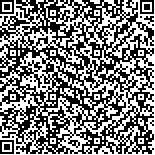| Quote
: |
雷亚玲,阮绍萍,曹瑾,袁捷,王佩,陈阳,韩祖成.基于古籍文献及名老中医经验的郁病用药规律数据挖掘[J].湖南中医药大学学报英文版,2019,39(3):357-361.[Click to copy
] |
|
| |
|
|
| This paper
:Browser 3162times Download 1275times |
| 基于古籍文献及名老中医经验的郁病用药规律数据挖掘 |
| 雷亚玲,阮绍萍,曹瑾,袁捷,王佩,陈阳,韩祖成 |
| (陕西省中医医院, 陕西 西安 710003;陕西中医药大学临床医学院, 陕西 咸阳 712046) |
| 摘要: |
| 目的 运用数据挖掘技术,整理研究古籍文献及名老中医经验的郁病用药规律。方法 建立古籍文献及名老中医郁病诊治数据库,运用IBM SPSS Statistics 21.0及IBM SPSS Modeler软件,使用频数统计、聚类分析、关联规则、因子分析等数据挖掘技术进行分析和比较。结果 (1)辨治用药方面:古籍文献用药更为丰富,重视肝、脾,心、肾脏腑辨证等;因子分析发现,古籍文献更多采用越鞠丸类方、二陈汤类方、归脾丸类方等,而名老中医则更多采用自拟方、经验方。(2)郁病常见兼证配伍药味方面,古籍文献多配伍清热活血,化痰行气之品;名老中医经验则常配伍清热凉血,舒肝养心之品。(3)核心用药及常用药物配伍方面:古籍文献以川芎、香附、茯苓、半夏、陈皮为核心用药,药物配伍有:白芷配桔梗、远志配酸枣仁、沉香配石菖蒲、大黄、郁金、槟榔等;名老中医经验则以柴胡、白芍、当归、茯苓、香附最多,常用药物配伍如:槟榔配佛手、大枣配百合、穿山甲配路路通、皂角刺等。结论 对于郁病的诊治,古今用药虽有差别,但无论古籍文献还是当代名老中医经验都具有临证参考价值,不过来源于古籍的用药理论基础可能更为丰富,值得临床进一步挖掘学习。 |
| 关键词: 郁病 古籍文献 名老中医 数据挖掘 经验整理 |
| DOI:10.3969/j.issn.1674-070X.2019.03.016 |
| Received:December 04, 2018 |
| 基金项目:陕西省中医药管理局项目(JCPT018);陕西省科技厅重点研发计划重点项目(2018ZDXM-SF-013) |
|
| Data Mining of Medication Rule for Depressive Disorder Based on Ancient Books and Academic Experience of Famous Traditional Chinese Medicine Experts |
| LEI Yaling,RUAN Shaoping,CAO Jin,YUAN Jie,WANG Pei,CHEN Yang,HAN Zucheng |
| (Shaanxi Provincial Hospital of Traditional Chinese Medicine, Xi'an, Shaanxi 710003, China;School of Clinical Medicine, Shaanxi University of Chinese Medicine, Xianyang, Shaanxi 712046, China) |
| Abstract: |
| Objective To investigate the medication rule for depressive disorder based on data mining of ancient traditional Chinese medicine (TCM) books and the experience of famous TCM experts. Methods The database of the diagnosis and treatment of depressive disorder was established based on ancient books and the experience of famous TCM experts. IBM SPSS Statistics 21.0 and IBM SPSS Modeler were used, and data mining techniques including frequency statistics, cluster analysis, association rule, and factor analysis were used for analysis and comparison. Results As for medication for syndrome differentiation and treatment, ancient books had more abundant drugs and emphasized syndrome differentiation based on viscera and bowels such as the liver, the spleen, the heart, and the kidney; factor analysis showed that ancient books tended to use the prescriptions of Yueju Pill, Erchen Decoction, and Guipi Pill, while famous TCM experts tended to use self-made prescriptions and experienced prescriptions. As for drug combination for common accompanying symptoms of depressive disorder, ancient books tended to use heat-clearing, blood-activating, phlegm-eliminating, and Qi-moving drugs, while famous TCM experts tended to use heat-clearing, blood-cooling, liver-soothing, and heart-nourishing drugs. As for core drugs and commonly used drug combinations, ancient books tended to use Rhizoma Ligustici Chuanxiong, Rhizoma Cyperi, Poria cocos, Pinellia ternata, and tangerine peel as core drugs, and commonly used drug combinations included Radix Angelicae Dahuricae combined with Platycodon grandiflorus, Polygala tenuifolia combined with jujube seed, and agilawood combined with Acorus tatarinowii, Rheum officinale, Curcuma aromatica, and areca nut; famous TCM experts tended to use Bupleurum chinense, Radix Paeoniae Alba, Angelica sinensis, Poria cocos, and Rhizoma Cyperi as core drugs, and commonly used drug combinations included areca nut combined with Citrus medica var. sarcodactylis, jujube combined with lily, and pangolin combined with Liquidambaris Fructus and Gleditsiae Spina. Conclusion Although there are differences between ancient and modern medications for the diagnosis and treatment of depressive disorder, both ancient books and the experience of famous TCM experts have a reference value in clinical practice. There are abundant medication theories derived from ancient books, which is worthy of further data mining and research. |
| Key words: depressive disorder ancient book famous traditional Chinese medicine expert data mining experience summary |
|

二维码(扫一下试试看!) |
|
|
|
|


